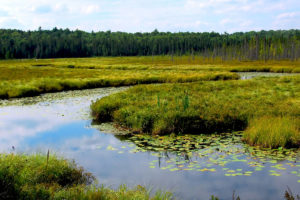While November approaches in the run up to our presidential election, another important political battle is playing out over US agricultural policy. At the end of September 2012 current Farm Bill legislation will expire and a new law authorizing the agricultural policies and spending will be required to take its place. Currently, U.S. lawmakers are hashing out a range of issues that make up U.S. farm policy. Throughout the 80 year history of national farm policy the complexity of issues addressed by the legislation has greatly evolved and today with annual spending that exceeds $56 billion the law touches virtually every citizen’s life each day. In 1933, under President Franklin Roosevelt’s New Deal the Agricultural Adjustment Act was passed and originally aimed to provide measures that protect financial stability of the family farm and agricultural markets. Since 1933, the legislation has continued to evolve and shape the lives of Americans and the way we benefit from the food and fiber provided by the American farm. Modern farm policy impacts our lives in other ways also by providing conservation projects to conserve farmland and green space, to rural economic development and nutrition assistance programs.
Today’s Farm Bill debate takes place at a time similar to those of the dust bowl in the 1930s following similar market corrections when economic conditions across the country had eroded along with confidence in our financial systems. While there are parallels to these periods many other economic conditions including record grain prices and the overall landscape of the agricultural sector is quite different. None the less, the passing of new agricultural policy is certain to shape decisions and opportunity for farmers, and land managers for years to come, much in the way the first Farm Bill did in 1933.
Farm Bill programs take a variety of forms in protecting commodity markets, world trade, nutrition, forestry and conservation. For land managers aspects of the forestry and conservation measures are critical and designed to provide management assistance to improve timber management and soil and water conservation. While this takes many forms programmatically a well-known program is the Conservation Reserve Program (CRP) and the locally targeted program in the Conservation Reserve Enhance Program (CREP). In Maryland, CREP has been widely supported by federal, state, and private partners, as it has enrolled more than 70,000 acres statewide. These sensitive lands enrolled for 10 to 15 year periods are planted in native trees, grass, or sometimes restored to wetland habitats. In return for putting these lands in a conservation practice, farmers are provided a rental payment based on the soil type being removed from agricultural production. Soil rental rates are valued based on physical characteristics of the soil and environmental benefits derived from putting conservation cover on the land. Therefore, those soils that have the highest agricultural value for production are given a lower rental rate than those marginal soils which are often too wet to till in the Spring or difficult to harvest in the Fall. The intended outcome of this incentive based system is to improve efficiencies on the farm and promote soil conservation. Through programs like CREP agricultural producers in Maryland have done much to improve water quality and conservation in the Chesapeake Bay. This is only one example of how land managers can look to the Farm Bill for improving management of their property as well as unlocking the financial assets intrinsic to the land. These conservation values or eco-assets running with the land are an important aspect in understanding and maximizing the benefits garnered through land ownership and management. There are a number of resources out there today to assist landowners in accessing Farm Bill programs. The local Soil and Water Conservation District located in each county in Maryland is a good place to begin your research into what programs might best apply to the goals you have for your property. Within each Conservation District staff from the United States Department of Agriculture is co-located with state and local agriculture staff charged with providing the technical assistance required to implement Farm Bill programs.
This content may not be used or reproduced in any manner whatsoever, in part or in whole, without written permission of LANDTHINK. Use of this content without permission is a violation of federal copyright law. The articles, posts, comments, opinions and information provided by LANDTHINK are for informational and research purposes only and DOES NOT substitute or coincide with the advice of an attorney, accountant, real estate broker or any other licensed real estate professional. LANDTHINK strongly advises visitors and readers to seek their own professional guidance and advice related to buying, investing in or selling real estate.










Add Comment